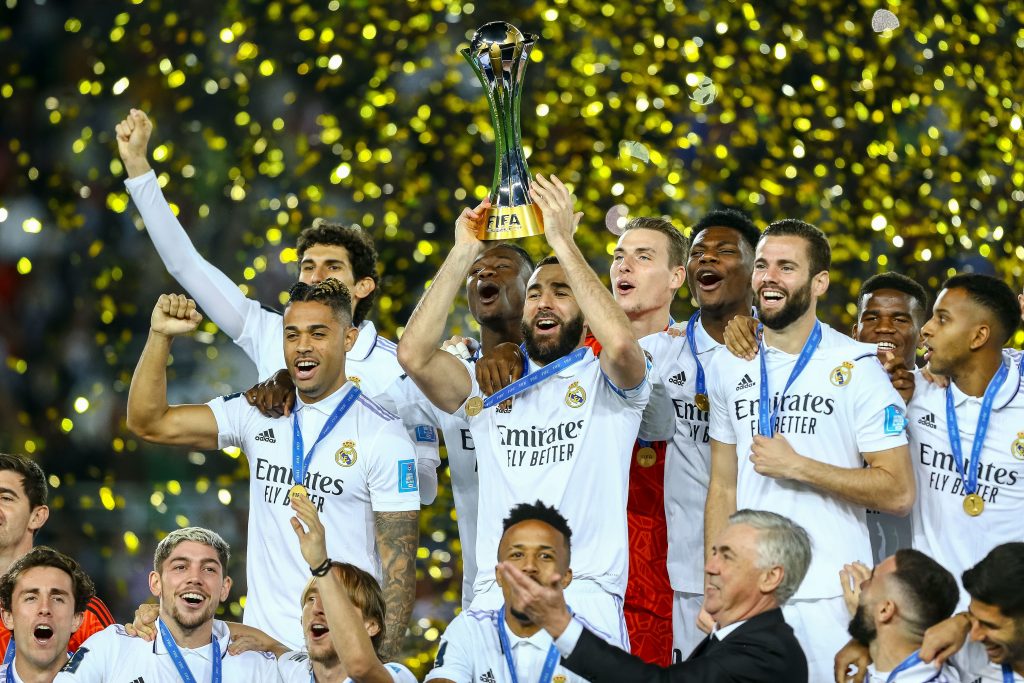As announced last month, the 2030 FIFA World Cup will be held by Spain, Portugal and Morocco. While Spain hosted the tournament in 1982, and Portugal have relatively recent experience as the home of EURO 2004, you have to go back to 1988 to find the last time Morocco hosted a major international tournament, the African Cup of Nations (AFCON).
But Moroccan football has been on the rise in recent years. At the 2022 World Cup, propelled by international stars like Achraf Hakimi and Hakim Ziyech, the national side beat the likes of Belgium and Portugal to finish in fourth place.
Morocco will now become only the second African nation to host international football’s greatest prize, following the 2010 World Cup in South Africa. Here are the full details on what we know about Morocco’s stadiums at the 2030 World Cup.

Morocco 2030 World Cup stadiums: What new grounds will be built?
At the heart of Morocco’s bid is the construction of a huge, 93,000-seater stadium in the city of Benslimane, just under 30 miles from Casablanca.
The currently-unnamed stadium would be the third-largest stadium on the continent behind the recently-completed New Administrative Capital Stadium in Egypt and the FNB Stadium in South Africa, which hosted the 2010 World Cup final under the name Soccer City.
The stadium is expected to cost around £400 million to build and should be completed in 2028.
Morocco 2030 World Cup stadiums: Which will be used?
Fouzi Lekjaa, head of the Royal Moroccan Football Federation, announced plans to use six other pre-existing stadiums for the tournament, each of which will be renovated to varying degrees.
Ibn Batouta Stadium
The Ibn Batouta Stadium in Tangier is the current largest stadium in the country with a capacity of 65,000. It was completed in 2011 and recently held four matches at the 2022 Club World Cup.

Prince Moulay Abdellah Stadium
Prince Moulay Abdellah Stadium in Rabat has recently been demolished in order to build an improved version of the stadium on the same site. It also held matches at the 2022 Club World Cup, including the final between Real Madrid and Al-Hilal.
Mohamed V Stadium
Mohamed V Stadium in Casablanca is the oldest football stadium in Morocco having been opened in 1955. It is home to the Moroccan national football team and has a seated capacity of 46,000.
Adrar Stadium
Adrar Stadium in Agadir, Fez Stadium and Marrakesh Stadium make up the rest of the venues. Each have a capacity of around 45,000.
These renovations will cost an estimated £735 million, and will be completed in time for Morocco to host the 2025 AFCON, which the nation has also been awarded recently following the Confederation of African Football’s decision to remove Guinea as hosts.
Morocco was due to host the AFCON in 2015, but pulled out just months before the tournament was due to begin over fears that an Ebola virus epidemic in West Africa would spread.
What other countries are 2030 World Cup hosts?
Spain and Portugal are the other two nations which will host the tournament. It is likely that the Spanish stadiums will include, among others, the Santiago Bernabéu, Spotify Camp Nou, Estadio Metropolitano and Estadio San Mamés. Similarly, the Portuguese stadiums will most probably be the Estádio do Dragão, Estádio José Alvalade and Estádio da Luz.
To celebrate the tournament’s centenary, Uruguay, Argentina and Paraguay will each also hold one match in 2030. The opening match will be played at Uruguay’s historic Estadio Centenario, where they beat Argentina 4-2 in the very first World Cup final.
Where will the 2030 World Cup final be held?
It has not yet been decided where the final will be held in 2030. Lekjaa told a Moroccan radio station that he hopes the tournament will be “crowned – god willing – with celebrations in Casablanca stadium at a historic final.”
However, perhaps unsurprisingly, Carlo Ancelotti believes the final should take place at the Santiago Bernabéu. He told MARCA last month that “the World Cup final has to be played in Madrid, because Madrid is the capital of Spain. And it has to be played at the Bernabéu because the Bernabéu is going to be the best stadium in the world. Simply for that reason.”

What other international football tournaments has Morocco hosted in the past?
In addition to the 1988 AFCON, Morocco has also held the 2022 Women’s African Cup of Nations, the 2011 African U-23 Championship and various editions of the Arab Games.
The country will also host Afcon 2025, which will act as a vital warm-up for the 2030 World Cup.
If Morocco's new stadium plans do come to fruition, they will have the third largest stadium in Africa. Here's the current list:
| 1 |
FNB Stadium |
94,736 |
Johannesburg |
South Africa |
| 2 |
New Administrative Capital Stadium |
93,940 |
New Administrative Capital |
Egypt |
| 3 |
Borg el-Arab Stadium |
86,000 |
Alexandria |
Egypt |
| 4 |
Stade des Martyrs |
80,000 |
Kinshasa |
DR Congo |
| 5 |
Cairo International Stadium |
75,000 |
Cairo |
Egypt |
| 6 |
Ibn Batouta Stadium |
75,000 |
Tangier |
Morocco |
| 7 |
Prince Moulay Abdellah Stadium |
69,500 |
Rabat |
Morocco |
| 8 |
Stade du 5 Juillet |
64,200 |
Algiers |
Algeria |
| 9 |
Ellis Park Stadium |
62,567 |
Johannesburg |
South Africa |
| 10 |
Abuja Stadium |
60,491 |
Abuja |
Nigeria |
| 11 |
Stade 7 November |
60,000 |
Rades |
Tunisia |
| 12 |
Alassane Ouattara Stadium |
60,000 |
Abidjan |
Ivory Coast |
| 13 |
Stade Municipal de Kintele |
60,000 |
Brazzaville |
Congo |
| 14 |
National Stadium |
60,000 |
Dar es-Salaam |
Tanzania |
| 15 |
Paul Biya Stadium |
60,000 |
Yaounde |
Cameroon |
